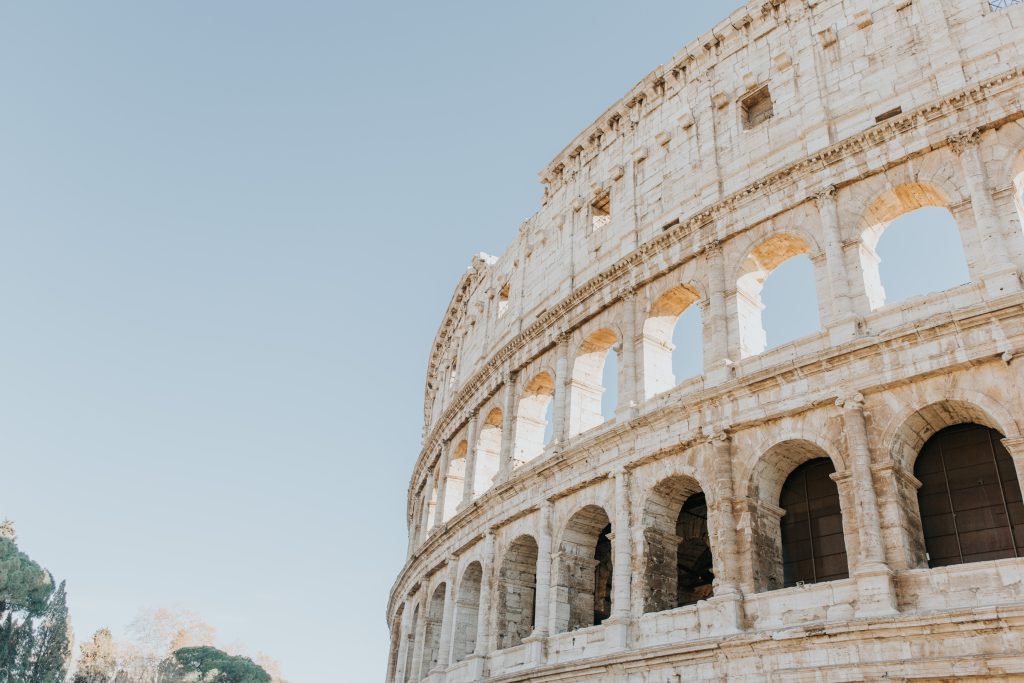There’s a reason most people refer to it as the Old Continent. Europe has a long and tortuous history, from the barbaric traditions of the Roman Empire to the infinitely tragic aftermath of the great world wars.
Our selection of seven historical sites in Europe perfectly embodies the continent’s vast and diverse heritage.
Lascaux, France
The Vézère Valley in Dordogne is called “the cradle of human art”, as it holds the highest concentration of Stone Age art found in Europe. The Lascaux UNESCO World Heritage Site is famous for its impressive collection of 500+ wall paintings dating back to the Upper Palaeolithic age, i.e., around 20,000 years ago. Indeed, the interior walls and ceilings present paintings of large animals which are believed to have commonly lived in the area at the time. This theory is consistent with the fossils discovered by archaeologists over the past centuries.
The actual cave opened to the public for a few decades after its seredipitous discovery by four local teenagers. However, visitors realsed carbon dioxide that considerably damaged the invaluable paintings. Lascaux II subsequently opened. It’s a meticulous reproduction created using the same techniques and pigments that Cro-Magnons so profusely adorned the original Lascaux with.
Colosseum, Italy

Emblem of not only Italy but also the powerful Roman empire that once had a hold on the vast majority of the European continent, making Rome the largest city in the world at the time, the Colosseum requires very little presentation.
It’s the largest amphitheatre ever built. Calculations suggest that it held between 50,000 and 80,000 spectators, seated according to rank. They would have gathered there to watch gladiatorial contests, animal hunts, mythology-related plays and re-enactments of various kinds. Impressively enough, construction for this massive structure started in AD 72 and lasted just eight years. Useful tip: skip the queue (this is one of the most visited historical sites in Europe after all) by purchasing your ticket online in advance.
Anne Frank’s House, Netherlands

Perhaps one of the most illustrious victims of the Holocaust, Anne Frank was a Jewish teenager in hiding along with her immediate family and a few relatives. They lived inside the building where Anne’s father used to work in the Jordaan district. This now oddly famous shelter is often referred to as “The Annex” by Anne in Diary of A Young Girl. Anne Frank’s House isopen to the public for visits which are guaranteed to be emotional as one of the most poignant World War II locations in Europe.
Anne Frank gained fame posthumously when her father Otto, the family’s only survivor, published her diary. It thoroughly documents their quiet, isolated life in hiding until their capture by the Gestapo sometime in 1944 and sent to concentration camps. Unbeknownst to him, it would go on to become one of the world’s most widely read books.
Stonehenge, Britain
Was it a burial mound or a pagan prayer site? How did the Druids transport these massive stones all the way from a quarry 40 kilometres away with primitive Neolithic equipment? Why are these exceptional monolithic stones laid out in very specific concentric circles? 5,000+ years later, archaeologists still can’t seem to agree on what Stonehenge was used for nor how exactly it came to be. What they do know, however, is that it’s clearly not a coincidence. The stones are likely laid out to catch the sun rays for winter and summer solstice pagan celebrations.
Today, Stonehenge is perhaps not only Britain’s, also but the world’s most famous and well-preserved prehistoric monument. Consequently, it welcomes millions of visitors every year.
Insider’s tip: book private sunset or sunrise visits of Stonehenge, which allows to actually set foot within the stone circle for an intimate, up close viewing of the mythical stones. The absolute best way to visit this historical sites in Europe!
Athens, Greece

Welcome to the world’s greatest heritage from the Greek Antiquity! The former citadel stands on a rocky outcrop that overlooks the city of Athens. It is precisely where visual arts, architecture, philosophy and democracy flourished in the thriving post-Persian war era around year 500 BC. Its invaluable ruins include the iconic Parthenon as well as the Temple of Athena Nike, the Erechtheion and the Propylaia.
Nowadays, the Acropolis is one of the world’s most precious monuments. It’s also an enduring symbol of the early stages of western civilisation and the apotheosis of Ancient Greece. History buffs will be particularly pleased to visit the nearby Acropolis Museum, an architectural masterpiece dedicated to the archaeological discoveries on and around the Acropolis of Athens.
Newgrange, Ireland
The peculiar prehistoric monument in County Meath just outside of Dublin may not look like much at first sight. Perhaps what would make it more impressive is the fact that it predates not just Stonehenge but also Egypt’s great pyramids of Giza. And that is just downright spectacular! Indeed, the large circular mound is part of Ireland’s Ancient East and also acts as Europe’s largest and most important concentration of prehistoric megalithic art.
It served a variety of purposes in its glory days, from funerary rites to economic functions as well as astronomical and religious places. Newgrange impresses by its sheer age and also by its brilliant layout. Truly one of the most mind-boggling historical sites in Europe.






